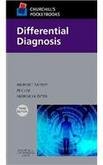UK ed. Edition
Systemic lupus erythematosus (SLE or lupus) is a fairly common disease with a relatively high mortality rate that is characterized by multisystemic disorders, including the kidney. Recently, epidemiologic studies also show that the incidence of new SLE cases is increasing. Renal involvement is very common in systemic lupus erythematosus, occurring in up to 2/3 of patients and is a major cause of morbidity and mortality. Lupus nephritis affects glomeruli, tubules, interstitium peritubular capillaries, arteries, and veins with a spectrum of lesion. Although tubular, interstitial, and vascular lesions are common in lupus nephritis and may contribute significantly to overall disease severity, activity, and chronicity, they are not considered in most important classifications (OMS and ISN/RPS). These classifications are based entirely on the evaluation of glomerular alterations. Furthermore, the increasingly recognized, new pathological entity called lupus podocitopathy in the context of SLE, is not also accepted in the above classifications. Amyloidosis, non-lupus nephritides (including IgA nephropathy), therapeutic nephrotoxicity, and lupus in overlap with other connective tissue diseases are occasionally described. Therefore, this new case-based book fills a gap in the literature, and the authors call attention to some clinical entities which are less known and more difficult to recognize. The book design allows correlating morphologic aspects with clinical findings, and determines the prognosis and therapeutic response. It is a useful resource for pathologists, nephrologists, rheumatologist, physicians, and lupus and kidney students. Each case consists of typical histology images, a brief history, diagnosis, discussion, and pearls and pitfalls. The book is based on a multicenter experience, and the importance of kidney biopsy in the differential diagnosis is emphasised.
DOWNLOAD THIS MEDICAL BOOK










